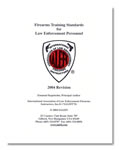All Articles
Alternative Dispute Resolution (ADR)
HVAC - Heating, Ventilation, Air Conditioning
Archaeology - Archeology
Hydrology
Attorney Fees
Insurance
Audio Forensics
Land Mapping - Surveying - Zoning
Automotive - Vehicular
Laws & Procedures
Bacteria - Fungus - Mold Investigation
Legal Issues
Biokinetics
Life Expectancy - Life Care Planning
Branding - Brand Management
Logistics - Reverse Logistics
Child Welfare
Manufacturing
Computer Forensics
Marketing
Cosmetology: Hair / Makeup
Medicine
Crisis Management
Meditation
Damages
Metallurgy
Discovery & Electronic Discovery
Mining
Domestic Violence
Neuropsychology
Electrical - Electrocution
Nonprofit Organizations
Environment
Pain Management
Exercise & Fitness
Pharmacy & Pharmacology
Expert Witnessing
Police Practices & Procedures
Family Issues
Politics
Fires & Explosions
Professional Skills
Food & Beverage
Psychiatry
Foot / Ankle Surgery
Recreation & Sports
Forensic Psychiatry
Transportation
Healthcare
Warnings & Labels
More...

ELEVATORS-ESCALATOR-AUTOMATIC-DOORS-PAGE ARTICLES MAIN PAGE
. Contact Us if you are interested in having your work published on our website and linked to your Profile(s).
All Articles
Alcohol, Tobacco & Other Drugs
HVAC - Heating, Ventilation, Air Conditioning
Animals
Industrial Hygiene and Safety
Arms - Guns - Weapons
Law Enforcement
Artificial Intelligence (AI) / Machine Learning (ML)
Manufacturing
Audio Forensics
Market Research
Automotive - Vehicular
Mediation
Banking
Medical - Medicine
Blockchain Information
Medical Malpractice
Boating
Metallurgy
Business Consulting
Nursing
Child Witch Phenomenon
Obstetrics - Gynecology (OBGYN)
Construction
OSHA
Crime Scene Investigation
Plants & Trees
Criminology
Politics
Economics
Pools and Spas (Recreational)
Elder Abuse
Professional Skills
Engineering
Psychology
Engines (Combustion - Diesel)
Radiology
Expert Witnessing
Risk Management
Foreign Affairs - Geopolitics
Security
Forensic Psychiatry
Sexual Abuse - Molestation - Harassment
Forgery & Fraud
Supply Chain Management
Gems & Jewelry
Taxation
Healthcare Facilities - Hospitals
Toxicology
Hotels & Hospitality
Workplace Violence
More...
Featured Articles
There are no active articles here at this time. Please use the search bar, try another category, or contact us if you would like to contribute an article.
This Article is unavailable. Contact Us
Search articles by title, description, author etc.
Sort Featured Articles
Featured resources
Firearms Training Standards for Law...
by Emanuel Kapelsohn
Lessons Learned: How to Avoid the...
by John D. Foubert, PhD
Insurance Coverage for Environmental...
by Mitchell L. Lathrop
Follow us










